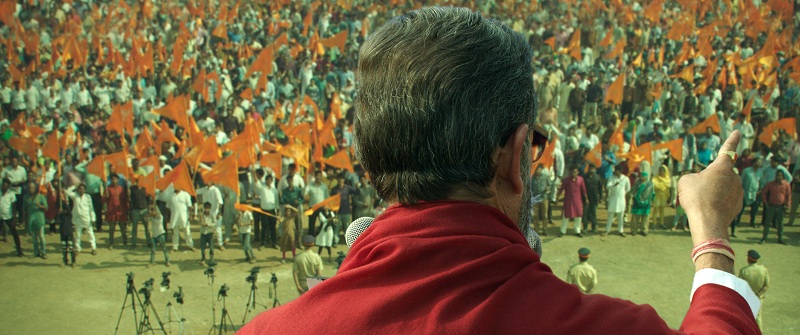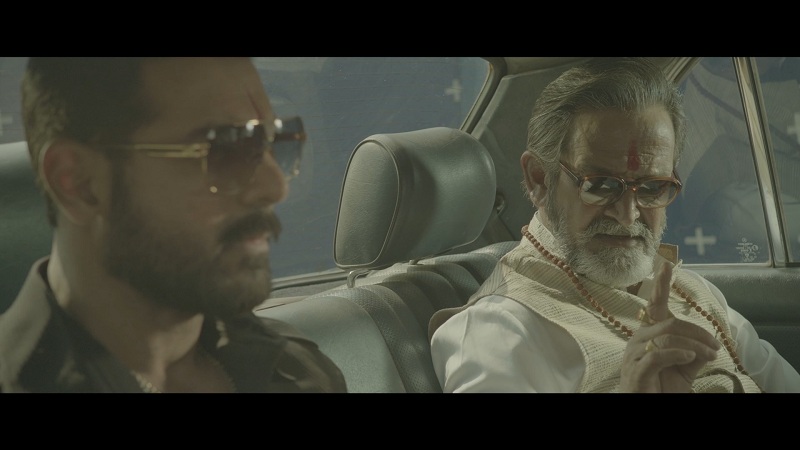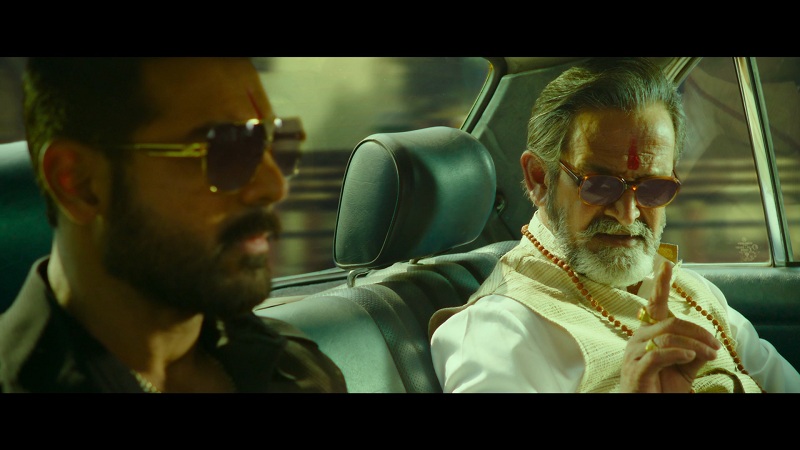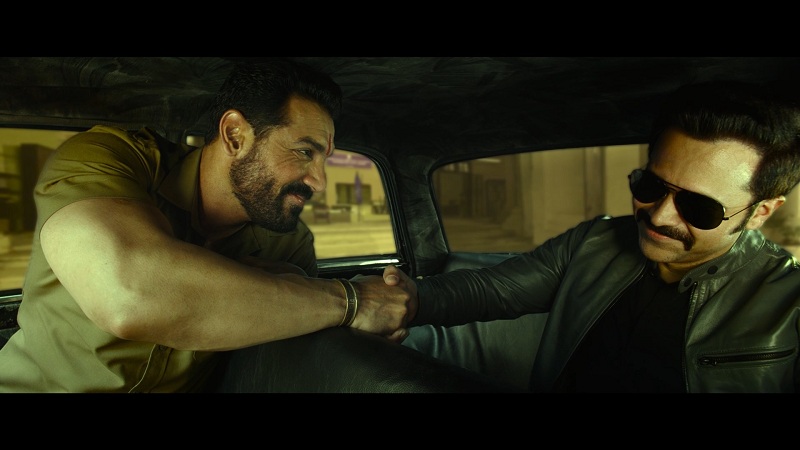
Packed with thrill, action, 80’s backdrop and bullets, Mumbai Saga has been making waves in the ecosystem for many reasons. On the imagery front, it scores conspicuously well. We caught up with the team of Nube Cirrus to know about the VFX and colouring aspect of the movie.
The Nube Cirrus Team candidly spoke about their experience of working with the industry stalwart Sanjay Gupta’s White Feather Films and T-Series to explain colour grading and VFX carried out on the recently released Mumbai Saga starring John Abraham and Emraan Hashmi.
Started in 2015, Nube Studio is one of leading post-production facilities in Mumbai, which was founded by veteran colourist Navin Shetty. In a short span of time, he diversified into running two more divisions of Nube Studio namely: Ventana studios and Nube Cirrus specialising in high-end colour grading, CG/VFX for commercial advertisements, feature films, TV series, web series and music videos.


With a passion to encourage storytellers to work upon exciting stories even with strained budgets, Fundamental Pictures as a production company started soon after. It has already produced films like Zoo and Cargo for Netflix.
Even during the pandemic, Nube Cirrus successfully provided services for web series like Aarya, Rakhtanjal and the recently released Mumbai Saga in theatres. Nube Cirrus is a division of Nube Studios that started in 2019 with a vision to provide end-to-end technical and creative services for producing high-quality content for a global audience. Its offerings include DI Colour Grading, DIT, VFX, Motion Design for Feature films, Music Videos, and all types of long format content.
Speaking about the major challenge posed by the pandemic, Nube Cirrus managing partner Chetna Shetty explains, ”Just when we were rearing to move forward in 2020, the pandemic struck, and we had to rearrange our workflow. The VFX team had to work remotely from home.”
While sharing the experience of colour grading on the recently released film, Mumbai Saga, at Nube Cirrus, the colourist Hany Halim, who hails from Cairo, describes how wonderful it was working with an industry stalwart like Sanjay Gupta along with DOP Shikhar Bhatnagar. He shares, “Both of them were clear about the look they wanted to have for the film. I had arrived in India just before the lockdown and Mumbai Saga was my first big project with a big director and cast. I researched some of his previous films for the look and feel. His vision for the movie of the certain look became clear and at the same time I came up with my own ideas which gave a fresh perspective to the film and that I believe worked best.”
Detailing the experience of working with Sanjay Gupta as the director, producer Dharmic Mathur shares, “He is a legend. Who can forget Kaante, the shootout series and other countless masterpieces he has crafted. His visions for his films are clear and he knows what he wants both from the DI and VFX front. His experience and guidance pushed us on a whole new level on this one.”
While explaining the shots they delivered for a high-octane film like Mumbai Saga where lots of bullets flew, cars overturned, etc, Mathur elucidates, “We executed about 750+ shots in the film. Mumbai Saga is a hardcore action film with all sorts of VFX scope like chroma compositing, CGI animals, set extensions, crowd multiplication, etc.”
The pandemic-led restrictions had greatly affected the workflow as the artists had to work remotely on this project. Shetty explains, “We had only the senior creatives working from the studio and the rest of the artists were working remotely. We have set up our pipeline and the workflow in such a way that our artists sitting at home can work on the shots in real-time without any lack of bandwidth. Our tech team has kept security of the data on top priority and designed a workflow where not a single frame can be transferred from one system to another without multi-factor authentication and necessary approvals.”
Recounting the most challenging sequence that tested his VFX prowess, Mathur shares, “There were two sequences which were very challenging both in terms of DI and VFX. One being the John Abraham chasing the train sequence where we had to replace the original train with CG and the other being the climax sequence as it was shot on different days; sometimes it was sunny and on certain days it was overcast and raining. Matching those to the same level was the biggest challenge.” Continuing to explain the difficulties that the team faced while working on Mumbai Saga Shetty adds, “This project too had its share of challenges but we were able to overcome them and finish it on time.”
Talking about the technology that he used to create the imagery while working on Mumbai Saga, Mathur explains, “We used multiple software like Foundry Nuke, Adobe After Effects and Photoshop, Cinema 4D, etc. And we had 50+ VFX artists working on this.”
While elaborating on his involvement in the pre-production/scripting stage, he adds, “We were involved during the pre-production to design the shots along with the director and his creative team. A film is a collaborative effort of all the departments involved in the process and Mumbai Saga is a bright example of that.”
Shetty shares that there are a few projects in the pipeline. She reveals, “Our marketing team, headed by Shouvik Mahato and Vishal Banjaria, have secured projects of Netflix, Disney+ Hotstar, Amazon Prime and a few feature films as well. You will have many projects from us to look forward to.”
Enlisting the technologies he is looking forward to in the VFX sphere Mathur adds, “According to me, creativity is synonymous with infinity. With new technologies, like Virtual Production, motion capture and NCam gaining popularity among adaptive filmmakers, we should be prepared for a photo-realistic VFX output matching the international standards or maybe even surpassing it, who knows?”


To answer what it takes to work with Nube Cirrus, Shetty advises the budding artists who would like to work with the studio, “We are always in the hunt of talented individuals who love cinema and take up VFX or DI as their career not as their job. We believe in working smart and we like to work under the belief that no matter what level an artist is on, he or she has every right to give their inputs as this only makes us stronger.”
While explaining the mission for this year and the way forward for the next five years, Nube Studios managing partner Samitha Shetty concludes, “It has been an incredible journey of five+ years for Nube Studio and its divisions which wouldn’t have been possible without faith of our clients and an excellent team to back us. 2020 has been a year of troubleshooting, overcoming challenges and bringing fore fresh solutions together as a team. Going forward, Nube Studio and its divisions are all charged up for excellence in colour grading and other post-production services both for commercials and long-form content. With our core strength in post-production, we believe in the next five years, we will introduce over time unique creative & technological solutions into pre-production and production workflows to enable greater freedom for filmmakers and support the unprecedented volume of content creation anticipated in the next few years.”

